What’s the difference between a bassinet and a crib?
“Aren’t they both just tiny beds?”
Well, yes, but there are a few key differences, chief of which is size. Dimensions vary by manufacturer, but generally, most bassinets are around 30in (75cm) long and 18in (45cm) wide. Cribs, on the other hand, are a little larger, typically sizing up at around 53in (135cm) long and 30in (75cm) wide.
Bassinets are designed with newborns in mind. They’re usually supported by freestanding legs, but may also have a wheeled or rocking base. Some strollers may include a removable bassinet — super handy when you and your little one have a lunch date planned! Some bassinets can even be attached to other surfaces, such as the detachable bassinets found on playpens.
Cribs are a more permanent piece of furniture, designed to support your child for several years, right through to toddlerhood. Cribs can be used from birth, but some babies may prefer sleeping in a smaller space — though this will vary from one tot to the next! Unlike bassinets, cribs aren’t considered ‘portable’, but the payoff is their longevity — most babies will get 2-3 years of use out of a crib.
Put simply, a bassinet is designed for the first 3-6 months of life, while a traditional crib can be used from birth, usually right through to 2-3 years of age — though this will often be different for each baby or toddler.
Pros and cons of a bassinet
A snug, cozy cocoon, the bassinet’s smaller frame makes it ideal for newborns and younger babies. Bassinets are usually used during the first few months of life, up to when the baby starts rolling over or pushing up on hands and knees.
Bassinet pros
Portability: Bassinets are lightweight and easy to move around, allowing you to keep your baby close, whether it’s for daytime naps or nighttime sleeping.
Space-saving: If you’re working with a smaller space, a bassinet fits nicely in a bedroom, leaving plenty of room for everything else.
Convenience for night feeds: Bassinets are perfect if you’d prefer to sleep in the same room as your baby. They’re usually small enough to fit beside your bed, making those nighttime feedings or check-ins much more manageable.
Ideal for newborns: The snug design of a bassinet helps your newborn baby feel secure, providing a comfortable and safe sleeping environment in the early weeks after birth.
Crib transitioning: Starting your little one off in a bassinet may make the transition to a crib easier.
Bassinet cons
Limited lifespan: Babies grow quickly, and most will outgrow a bassinet within 4-6 months, meaning you’ll need to transition to a crib sooner rather than later.
Weight limits: Most bassinets have a weight capacity of 15-20 pounds, so larger babies may outgrow them even earlier.
Less versatile: Bassinets don’t offer the longevity or multi-functionality that cribs often provide.
How long should a baby sleep in a bassinet?
Most babies can sleep in a bassinet until they reach a specific weight limit (typically around 15-20 pounds) or until they start showing signs of greater mobility — like rolling over or pushing up on their hands and knees. For most parents, this window is around 4 to 6 months.
Once your baby starts becoming more mobile, it’s time to transition to a crib. While bassinets are wonderful for keeping your baby close, their smaller size and lower walls make them less suitable for older infants who are starting to explore their ability to move!
Pros and cons of a crib
Cribs are an ideal long-term slumber spot for your little one. Typically crafted from sturdy materials like wood or metal, what they sacrifice in portability, they make up for with longevity and comfort.
Crib pros
Longevity: A crib is a long-term investment. It can be used from the newborn stage through toddlerhood and even beyond if you opt for a convertible crib that can transform into a toddler bed.
Spaciousness: Cribs offer plenty of room for your baby to grow, stretch out, and move around comfortably as they become more active.
Sturdiness and safety: Cribs are built to be solid and secure, meeting strict safety standards. They’re designed to withstand years of use, making them a safe choice for older, more mobile babies.
Cost-effective over time: While the upfront cost may be higher, cribs can last for years (particularly in the case of convertible cribs), making them a more cost-effective option in the long run.
Crib cons
Takes up more space: Cribs are larger and more permanent, making them less ideal if you’re short on space or want the flexibility of moving your baby’s sleeping area around the house.
Less convenient for night feeds: If you prefer having your baby close by during the night, a crib might be less convenient unless you have space for it in your bedroom.
Not portable: Cribs are heavy and meant to stay in one place, making them a less flexible option if you need to move the baby’s sleep area frequently.
Should I choose a bassinet or a crib for my newborn?
Bassinets are designed specifically for newborns — they’re small, portable, and cheaper than cribs, but this doesn’t necessarily make them the best option for all parents. During the first 6 months of life, a bassinet offers the ultimate convenience as they’re great for night feeds, an ideal companion for day trips, and have a relatively small footprint, making them well-suited to smaller living spaces.
Sooner or later though, your little one won’t be so little anymore, and you’ll need to upgrade to a crib. If you’re running on a tight budget, it might be better to suffer the inevitable expense of a crib up front, rather than kicking the can down the road, so to speak.
Ultimately, whether you should choose a bassinet or a crib depends on your priorities. If convenience, portability, and space-saving are concerns in the early months, a bassinet is a good option. However, if you’re looking to make a one-time investment and avoid future costs, starting with a crib may be the more economical choice in the long run.
Which is safer for my baby — a crib or a bassinet?
As long as they meet modern safety standards, either a crib or a bassinet is fine. The American Academy of Pediatrics (AAP) recommends that babies sleep on a firm, flat surface with no extra bedding, pillows, or toys (such as stuffed animals)— and both a crib and a bassinet can provide this, but there are a few factors to keep in mind when deciding between the two:
Bassinets are great for newborns because they’re designed with the earliest months of parenthood in mind. They’re cozy, secure, and convenient, boasting superior portability. However, they’re only suitable for the first 3-6 months of life due to weight limits. And because of their lower sides, they’re also unsuitable for little ones who are getting more adventurous and can push up on their hands or roll over.
Cribs, by contrast, are larger, more stable, and designed to serve your tot until they’re toddling, with higher walls and more robust construction. Cribs also have strict safety standards set by the CPSC (Consumer Product Safety Commission), ensuring things like proper slat spacing, secure mattress support, and banning of unsafe features like drop-down sides.
It’s also worth noting that the AAP recommends against co-sleepers, or any other kind of device that attaches to the parent’s bed.
Should I buy a used crib or bassinet?
Buying second-hand baby gear can be tempting, especially when you consider how quickly little ones outgrow things like cribs and bassinets. And yes, it can save you quite a bit of money — but there are a few things you’ll want to keep in mind before going the pre-loved route.
First and foremost, safety standards evolve. Traditional cribs and bassinets manufactured years ago might not meet the latest safety guidelines. For instance, cribs with drop-down sides were common at one point, but these have been banned in the US since 2011 due to safety concerns.
So, if you’re thinking about buying used, make sure it complies with current safety standards. Check the manufacturing date (most cribs have a label on the frame) and ensure the model hasn’t been recalled.
Next up: the mattress. Whether you go for a crib or bassinet, you’ll need a firm, snug-fitting mattress. Over time, mattresses can lose their shape or become less firm, which can create unsafe gaps between the mattress and the sides of the crib or bassinet. If you’re buying second-hand, it’s best to invest in a new mattress to ensure it’s firm and in top condition.
And finally, keep an eye out for wear and tear. While some wear is natural, you’ll want to inspect the item closely for cracks, splinters, or loose mechanisms. Anything that compromises the stability of the crib or bassinet is a no-go.
In short: yes, you can buy both a bassinet and a crib used — but proceed with caution. After all, your baby’s sleep (and your peace of mind) is well worth it.
Whether you’re leaning toward a bassinet for those early room-sharing months or thinking long-term with a crib, the choice comes down to what works best for your family’s needs, space, and budget. Both cribs and bassinets come with their own set of pros and cons, but whichever one you choose, your baby will have a safe and comfy spot to catch all those Zzzs — and let’s face it, is there anything more precious than gazing down at your baby sleeping soundly?
Reviewed by Rosey Davidson, Sleep Consultant, founder & CEO, in November 2024.

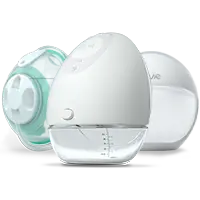
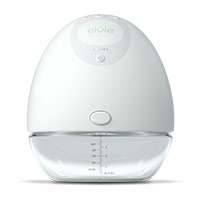
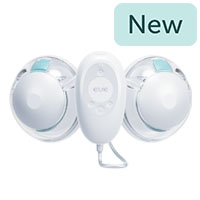
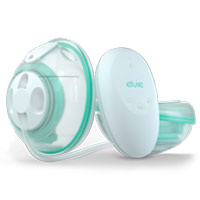
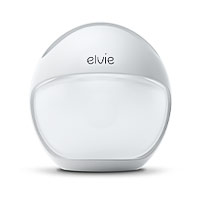
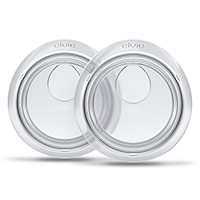
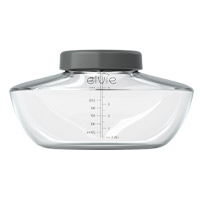
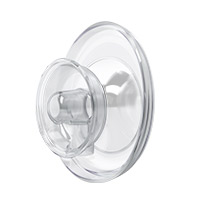

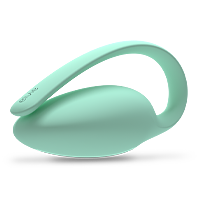
 9 minute read
9 minute read